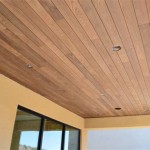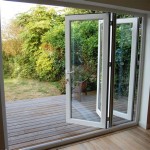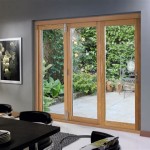Benefits of a Covered Patio in the Winter Japanese Style
In the tranquil embrace of winter, Japanese gardens radiate with an ethereal beauty. Among their serene landscapes, covered patios offer a sanctuary from the elements, allowing one to revel in the season's icy splendor while enveloped in warmth and comfort. This article explores the enchanting benefits of these architectural havens and provides insights into their traditional Japanese design.
Extended Outdoor Living: Covered patios defy seasonal limitations, extending the outdoor living season well into the winter months. Encased by a protective roof, one can escape the biting cold and enjoy the serene sights and sounds of nature from the comfort of their own backyard.
Protection from the Elements: Snow and rain become gentle companions under the shelter of a covered patio. The roof guards against icy precipitation, allowing one to relish the beauty of winter landscapes without the inconvenience of getting soaked.
Warmth and Comfort: Japanese-style covered patios often feature heated floors or radiant panels, ensuring a cozy and inviting ambiance. Even on the coldest of days, these heated spaces provide a warm and comfortable retreat where one can relax and bask in the serenity of the season.
Aesthetic Appeal: Covered patios not only enhance functionality but also add an element of visual charm to the garden. Their traditional Japanese design often incorporates natural materials such as wood and stone, seamlessly blending with the surrounding landscape and creating a harmonious aesthetic.
Zen Ambiance: In Japanese tradition, covered patios are designed to promote a sense of tranquility and introspection. The minimalist aesthetic, muted colors, and natural elements create a serene environment conducive to relaxation and meditation.
Cultural Connection: A covered patio in the Japanese style provides not only practical benefits but also a tangible connection to Japanese culture. It allows one to experience the beauty and tranquility of Japanese gardens and appreciate the traditional architectural elements.
Design Considerations: To create a truly authentic Japanese-style covered patio, consider the following design elements:
- Natural Materials: Use wood, stone, and bamboo to create a warm and earthy aesthetic.
- Minimalist Design: Opt for simple lines and uncluttered spaces.
- Muted Colors: Neutral tones such as gray, brown, and green evoke a sense of tranquility.
- Heated Features: Install radiant panels or heated floors to ensure warmth and comfort in winter.
- Zen Elements: Incorporate elements such as a water feature or rock garden to create a meditative ambiance.
In conclusion, a covered patio in the Japanese style offers a host of benefits during the winter months. It extends outdoor living, provides protection from the elements, ensures warmth and comfort, enhances aesthetic appeal, fosters a Zen ambiance, and connects one to Japanese culture. By carefully considering the design elements outlined above, you can create a winter sanctuary that seamlessly blends beauty and functionality, allowing you to fully embrace the enchanting season.

Design Work How The Japanese Porch Makes A Home Feel Larger

Differences Between A Pergola And Pagoda Azenco Outdoor

Engawa Architecture How This Japanese Concept Redefines Indoor Outdoor Living Architecturecourses Org

20 Stylish Covered Patio Ideas For 2024 Transform Your Outdoor Space Golden Bull Marketing

The Lure Of Japanese Garden Seattle S Favorite Since 1924 Swansons Nursery

10 Ways To Brighten Up Your Garden In Winter Bbc Gardeners World

What Is Japanese Interior Design
Pergolas Gazebos And More Amazing Outdoor Structures

57 Luxurious Covered Patio Ideas Pictures

How To Transform Your Outdoor Living Space Before After Official Bromic Heating
Related Posts








